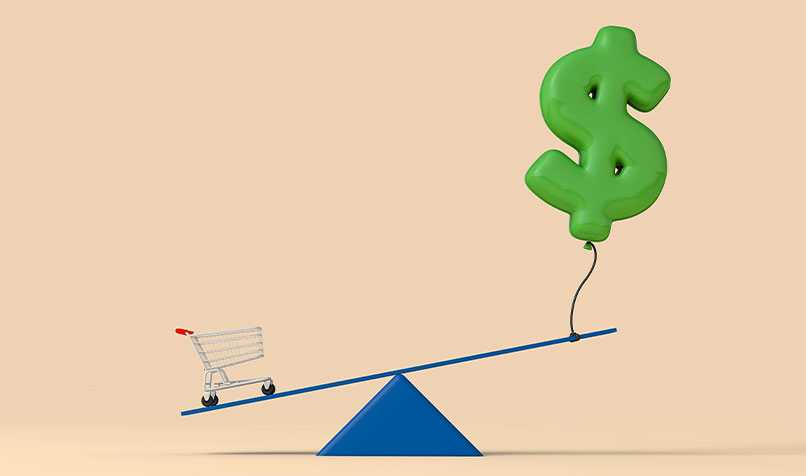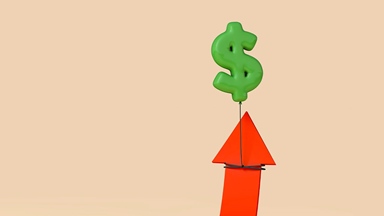Loading component...
At a glance
- Sticky high inflation is continuing to challenge many governments and central banks around the world.
- Interest rates remain the weapon of choice, but some are using other tools to suppress prices.
- Asian economies have achieved mixed results based on the different inflation approaches being used.
By Gary Anders
When COVID-19 started sweeping across the globe in 2020, few would have predicted the deadly virus would soon unleash an international inflation pandemic.
In many respects, an inflation outbreak was inevitable. After staying mostly dormant for many years, global inflation was destined to spike higher.
Supply chain disruptions, higher oil prices and unsettling geopolitical events have created a perfect inflation storm. Other contributors include the wide-ranging economic stimulus programs instigated by governments and central banks, such as cutting official interest rates to record lows.
While the global spread of COVID has largely been curtailed thanks to vaccines and medical advances, in some countries, inflation is still proving to be more resistant to economic treatments.
While Australia has largely relied on monetary policy to rein in inflation by ratcheting up interest rates, other countries have used legislated price controls, increased taxes and reduced government spending.
Uneven outcomes

The inflation battle, at least in many regions, is still raging. Some countries have clearly had more success than others in quelling domestic inflation levels to within their stated target bands.
Despite having declined from peak levels, inflation remains sticky in the US, Australia, the UK and Europe. Hyperinflation – also known as ultrahigh and accelerating inflation – remains an issue in many African and Central and South American countries.
In Asia, the inflation picture is varied and many countries are currently at or near their target band. They include India, Japan, the Philippines, Indonesia and Vietnam. Malaysia, which does not have a designated inflation target band, has an even lower level.
Mainland China’s inflation rate is just 1 per cent, while Thailand’s is lower at 0.7 per cent.
International Monetary Fund economist Krishna Srinivasan says, “In some advanced economies – notably New Zealand, Australia and Korea – persistent services inflation has kept inflation above target.
"Central banks should focus firmly on domestic conditions and avoid making decisions overly dependent on the expected path of US interest rates. While following the Federal Reserve could limit exchange rate volatility, that risk is that central banks could fall behind or move ahead of the curve and destabilise inflation expectations."
“By contrast, consumer prices have fallen in Thailand and [Mainland] China.
“Inflation excluding food and energy is low, which, in [Mainland] China, reflects legacy issues from the pandemic and the property sector correction. Elsewhere, inflation is close to target. This means that countries need differentiated policies.”
Srinivasan says that in economies where inflation is still elevated, central banks may need to keep interest rates higher for longer. In economies where core inflation is at or close to target, space for lowering interest rates may emerge later in the year.
By contrast, where inflation is undesirably low, such as in Mainland China, he says an accommodative stance is called for.
“Central banks should focus firmly on domestic conditions and avoid making decisions overly dependent on the expected path of US interest rates.
While following the Federal Reserve could limit exchange rate volatility, that risk is that central banks could fall behind or move ahead of the curve and destabilise inflation expectations.”
Inflation, interest rates and recession: understand the cycle
Asian perspective
Malaysia-based economist Dr Jomo Kwame Sundaram, research adviser to the Khazanah Research Institute says the responses to inflation by East Asian countries have been varied, especially in smaller countries that are “terrified money would flow out because of higher interest rates elsewhere”.
“There would be a massive exodus of capital, which would weaken their own exchange rates. That has happened very badly in Malaysia, because Malaysia is one of those countries, besides Japan, that has not lifted interest rates since 2023,” Jomo says.
Malaysia’s central bank, the Bank Negara Malaysia, is expected to keep its key interest rate on hold at 3 per cent until at least 2026.
“A number of factors have influenced the different responses and behaviours of various central banks, including the policy influence of elites in Asia,” Jomo adds.
“Many elites are very, very concerned about the exchange rates of their currencies, so there has been a lot of domestic pressure to keep their currencies from sliding by raising interest rates.”
In March, Japan ended its eight-year period of negative interest rates, raising them from minus 0.1 per cent to positive 0.1 per cent. Negative interest rates are used by central banks to stimulate economic growth and counter deflation.
Rather than having to fight inflation, Japan has been in a long-running fight against deflation, where prices have continued to fall despite efforts to stimulate demand, including negative interest rates and programs to encourage lending.
Japan imposes state controls on energy prices, with gas and electricity regulations dictating that price hikes can only happen gradually. It also imposes price controls on agricultural imports, such as wheat, where prices are fixed for six months at a time.
It has taken higher import costs and supply chain disruptions to move the inflation dial in an upwards direction in Japan. In January, Japan’s consumer price index surged to 4 per cent, its highest level since 1981 and double the Bank of Japan’s 2 per cent inflation target band.
Yet, instead of raising rates to combat inflation, Japan is effectively relying on a decline in real wages to keep levels under control.
Thailand, with one of the lowest inflation rates, continues to control prices for a wide range of selected goods and services, including rice and other staple agricultural products, building materials, liquefied gas, medicines, certain retail goods, and services through retail and wholesale channels.
At just 1 per cent, inflation is not the main problem in China. Economists are cautious about the sustainability of growth momentum given continued pressure on the property sector and weak consumer confidence.
As part of efforts to stimulate the economy, the Chinese government has been issuing long-term treasury bonds, similar to its approaches during the 1997 Asian financial crisis, the 2008 global financial crisis and the 2020 onset of COVID.
Vanguard Asia-Pacific chief economist Qian Wang says she expects a continued normalisation of Mainland China’s economy following the 2023 rebound from COVID lockdowns.
“We foresee full-year core inflation around 1 per cent and full-year headline inflation of 0.8 per cent. This is well below the 3 per cent inflation target set by The People’s Bank of China,” she says.
“To support the economy and given low levels of inflation, we expect the PBOC to ease its policy rate from 2.5 per cent to 2.2 per cent in 2024 and to cut banks’ reserve requirement ratios. However, we expect any easing in the near-term to be marginal.”
The right approach

Independent Australian economist Warren Hogan, Judo Bank’s chief economic adviser says monetary policy should be the starting point to controlling inflation before thinking about alternative methods.
“Without interest rates being set to the right level for the underlying economic conditions, you’ve got no chance of restoring price stability,” Hogan says. “That’s what this is all about – getting inflation down to a level that we would regard as having low and stable prices.
“In most countries, it’s around 2 per cent, but in Australia, we chose some time ago for it to be 2 to 3 per cent. The hideous factor in this current cycle is our starting point. That is, interest rates were virtually at zero in most countries, including ours.
“That’s meant that there’s this issue of changes in interest rates being very large, by the 425 basis points of rate hikes we’ve seen, and the potential that has to disrupt the economy, particularly mortgage holders.”
Hogan says it is long-standing economic theory that there is a level of real interest rate that should equate to price stability.
“Historically, there has probably been a real interest rate around 2 per cent or 3 per cent, but of course, going from where we were to where we need to has been a very difficult process. [Australia is] still obviously a little way off in terms of getting back down to that target band.
"Without interest rates being set to the right level for the underlying economic conditions, you’ve got no chance of restoring price stability. That’s what this is all about – getting inflation down to a level that we would regard as having low and stable prices."
“The theme is to get interest rates to the right level. Then if it’s not working there, look at specific markets. Inflation is a rise in the overall price level, and the only way to deal with that is through setting up the right monetary policy.”
Jomo says the rise in inflation has been the pretext for central banks to hike interest rates. However, he notes that higher interest rates, while suppressing demand, do nothing to address the fundamental recent causes – namely supply-side disruptions.
“You have a very blunt tool, if I may put it that way, where central banks have raised interest rates, but with limited effect on the main cause of recent inflation,” he says. “The other factor to bear in mind, of course, is that raising interest rates raise all kinds of other costs.
“The supply-side factors driving inflation also raise costs, and so to some extent, there has been a knock-on effect of all this on inflation.
“This is sort of what the Americans would call a perfect storm, which has kept inflation going.”
Jomo says the various responses to tackling inflation remain varied, often driven by domestic considerations, but also “by the appropriateness of independent thinking”.
“When the US raises interest rates, the European Central Bank follows suit and other central banks have to respond.
“Central banks behave in ways that seem to be concerted in the sense that all interest rates are going up, but it’s more jazz improvisation rather than a well-written symphony.”

